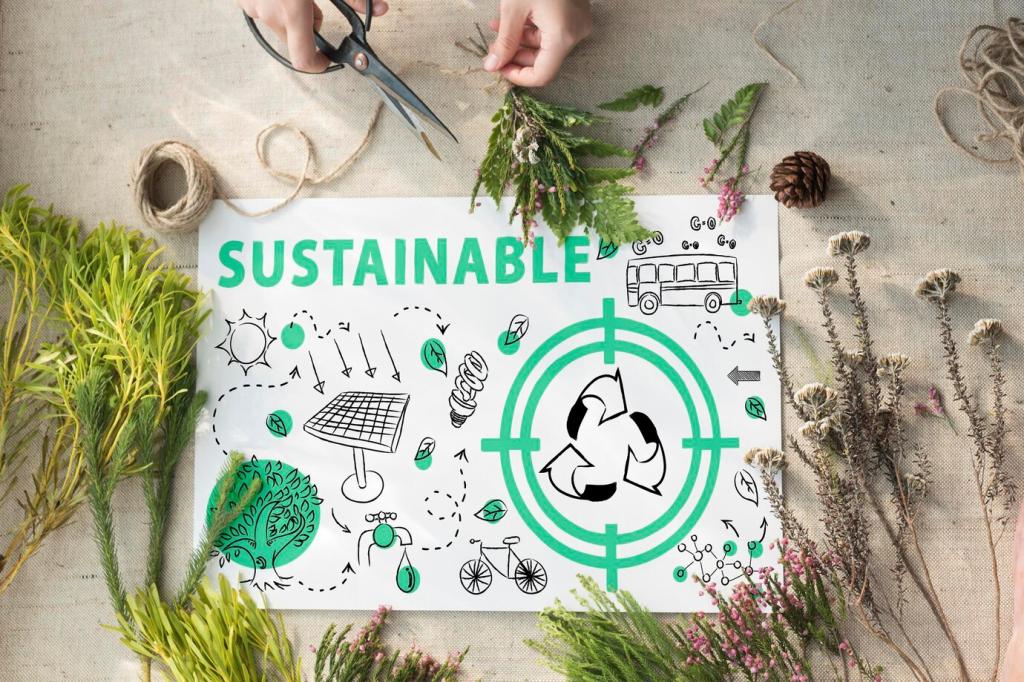
Sustainable Building Innovations: Exploring New Materials
The built environment is experiencing a transformative shift as the construction industry seeks innovative ways to address environmental challenges. Sustainable building materials are at the forefront of this evolution, offering not only reduced ecological impact but also improved performance and new aesthetic possibilities. From recycled content to bio-based products, these materials redefine what it means to build responsibly. This page delves into emerging material technologies, examining their benefits, applications, and impacts on the future of sustainable construction.
The Rise of Green Building Materials
Transforming waste products into valuable building materials is a major breakthrough. Recycled plastics are being processed into durable construction boards, while reclaimed concrete and glass aggregate are finding their way into new structures. Such innovations turn what would be landfill waste into functional, often high-performance materials. The result is a dramatic reduction in resource depletion, every project helping minimize the ecological footprint of the built environment. This approach also exemplifies circular economy principles, creating a closed loop where materials are continuously reused instead of discarded.
Previous
Next
Previous
Next
Biobased Materials and Their Growing Influence
Mycelium, the root structure of mushrooms, represents a fascinating leap in biobased material science. When cultivated with agricultural waste, mycelium can form bricks, insulation, and decorative panels—each being strong, lightweight, and completely biodegradable. Mycelium products have impressive thermal and acoustic performance, meeting rigorous building standards. Their production consumes little energy and results in materials that can be composted after use, thus closing the loop on waste. This innovation is not only sustainable but points to a future where living organisms play a role in material manufacturing.
High-Performance Glass and Transparent Materials
Smart glass technologies use electrochromic, thermochromic, or photochromic coatings to control light and heat passage in real time. By automatically adjusting opacity according to sunlight levels or user preferences, smart glass reduces reliance on artificial lighting and air conditioning, lowering energy demand. Integration into building management systems enables sophisticated climate control, which enhances occupant comfort and well-being. As these materials become more affordable, their adoption is poised to grow, transforming the energy profile of glass-dominated buildings.
Vacuum insulated glass (VIG) represents a leap forward in window performance. By inserting a vacuum layer between thin panes, VIG sharply cuts heat transfer compared to conventional double glazing. This innovation allows for expansive, transparent façades in climates that previously would have faced insurmountable heating or cooling costs. VIG enables highly insulated yet slender profiles, making it ideal for retrofit projects and new builds alike, combining visual openness with strict energy codes.
Recycled glass offers considerable sustainability benefits, reducing raw material demand, manufacturing energy, and landfill burden. Innovations in processing and quality control have made high-content recycled glass a viable option for both structural and decorative applications. Recycled glass can be melted and reformed countless times, making it a perfect example of circularity. By specifying recycled glass, architects can dramatically cut the embodied carbon of a building envelope, helping projects achieve green certification while promoting responsible resource use.


3D Printing and Digitally Fabricated Materials
3D printing in construction frequently utilizes cement-based mixtures, but emerging alternatives replace portland cement with low-carbon binders, recycled aggregates, and even geopolymer formulations. Layered quickly and with minimal waste, these new mixes reduce construction time and energy usage. They also facilitate finer geometric precision, which can optimize structural performance and material usage. The combination of additive manufacturing and green materials signals a promising path toward both innovation and sustainability.
Aerogels: Ultra-Light, High-Performance Options
Aerogels are among the world’s most effective insulating materials, offering exceptional thermal resistance at a fraction of the mass and thickness of traditional products. Their porous structure traps air, dramatically slowing heat transfer even in thin layers. While historically costly and fragile, recent developments have delivered more robust, affordable aerogels made with both synthetic and biobased feedstocks. These materials enable the construction of lighter, more efficient envelopes that can maximize usable interior space.
Vacuum Insulation Panels (VIPs)
Vacuum insulation panels take thermal performance a step further by encapsulating a rigid, porous core within a vacuum-sealed envelope. Heat transfer is minimized almost entirely, enabling unprecedented insulation with very low thickness. VIPs are invaluable in projects where space is tight, such as retrofits and high-performance facades. Their production is increasingly tuned to sustainability, using recyclable materials and less energy. Integrating VIPs allows designers to achieve high energy ratings without compromising aesthetics or space.
Phase Change Materials: Heating and Cooling Flexibility
Phase change materials (PCMs) are engineered to absorb, store, and release latent heat as they change state, helping regulate indoor temperature swings. Incorporated into walls or ceilings, PCMs absorb excess heat during the day and release it when temperatures drop, thus moderating the need for mechanical heating and cooling. Bio-based PCMs are gaining ground for their renewable nature and lower environmental impact. As these materials become common, they promise to transform thermal management and energy savings in a wide array of buildings.
Reduced Toxicity and Healthier Building Environments
Traditional adhesives, paints, and finishes often emit volatile organic compounds (VOCs) that degrade indoor air quality and cause health issues. Green formulations now feature water-based or plant-derived substances that minimize off-gassing while retaining durability and performance. Builders and manufacturers are rapidly adopting these alternatives in response to growing demand for healthier interiors. Regulatory standards and green building certifications increasingly require low-emission products, driving innovation in this essential category.

Durability, Adaptability, and Lifecycle Thinking
Advanced composites made from recycled fibers, resins, and bio-polymers produce cladding and structural components with superior durability and weather resistance. These materials are engineered to withstand harsh environmental conditions for decades, reducing maintenance, replacements, and overall lifecycle costs. Besides their robust nature, many composites can be recycled or remanufactured, creating opportunities for further resource recovery. Prioritizing durability ensures sustainable materials deliver environmental and economic benefits over the full lifespan of a building.
